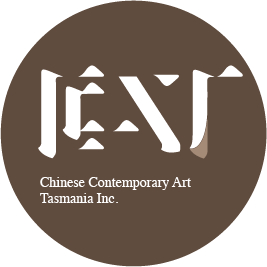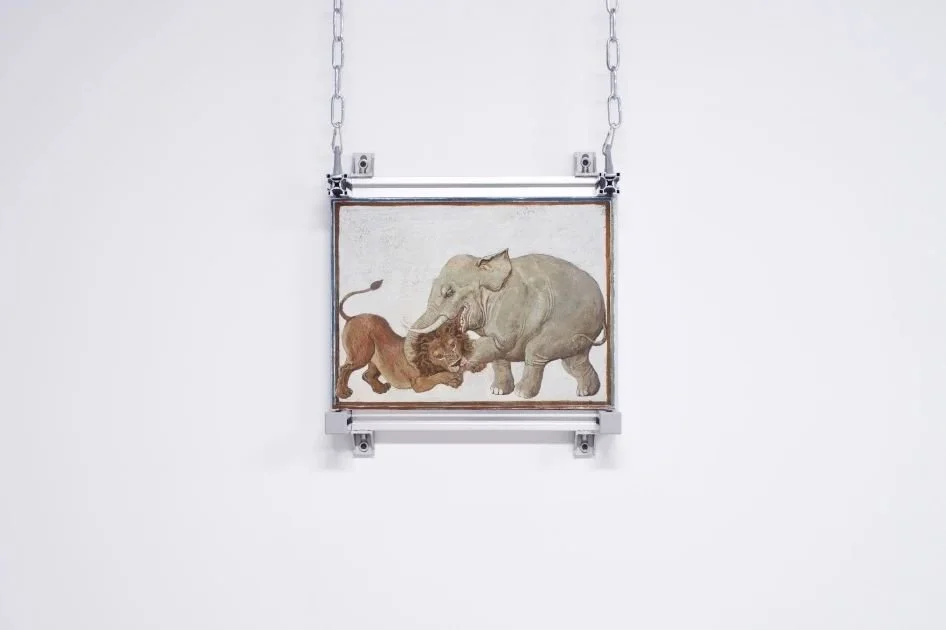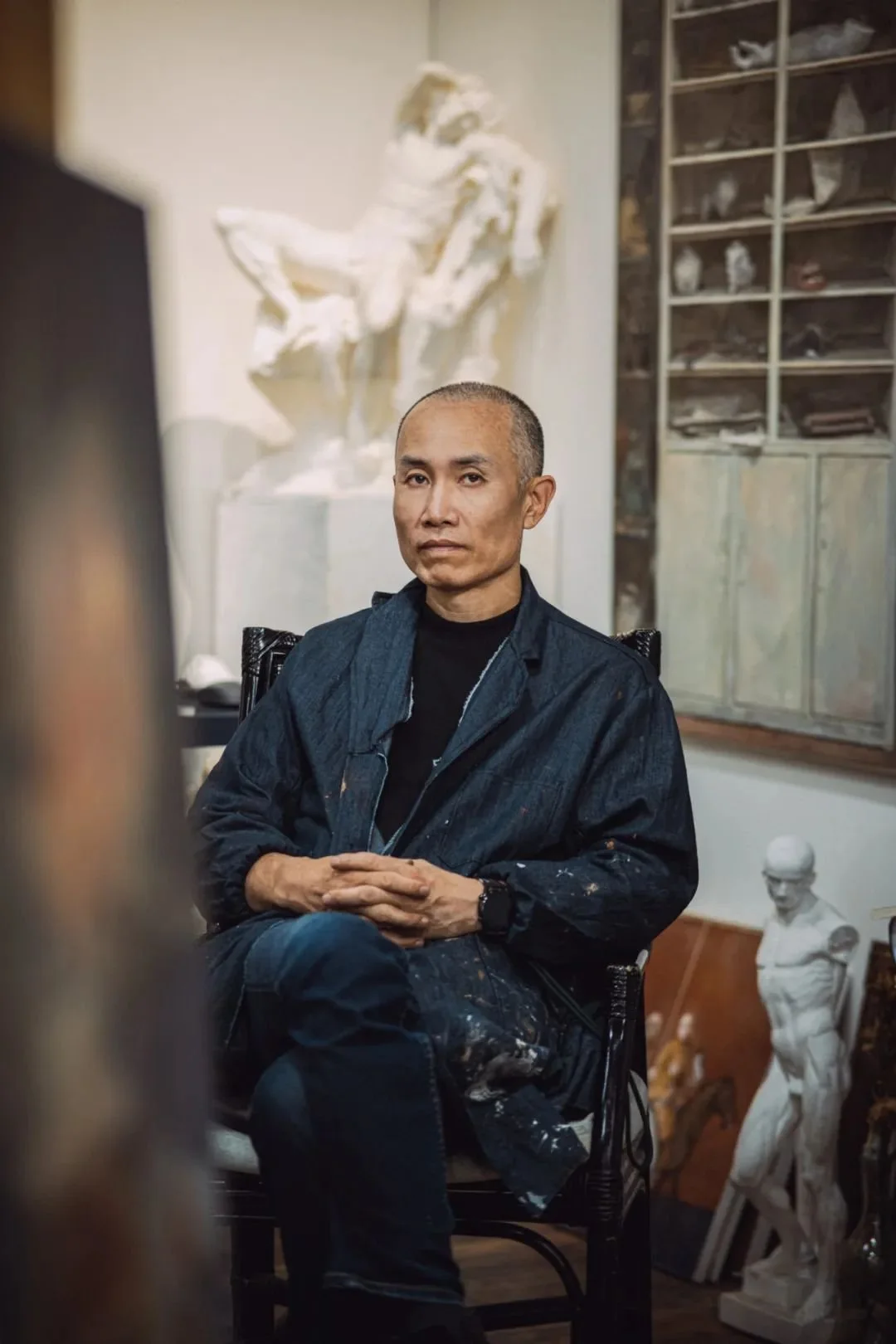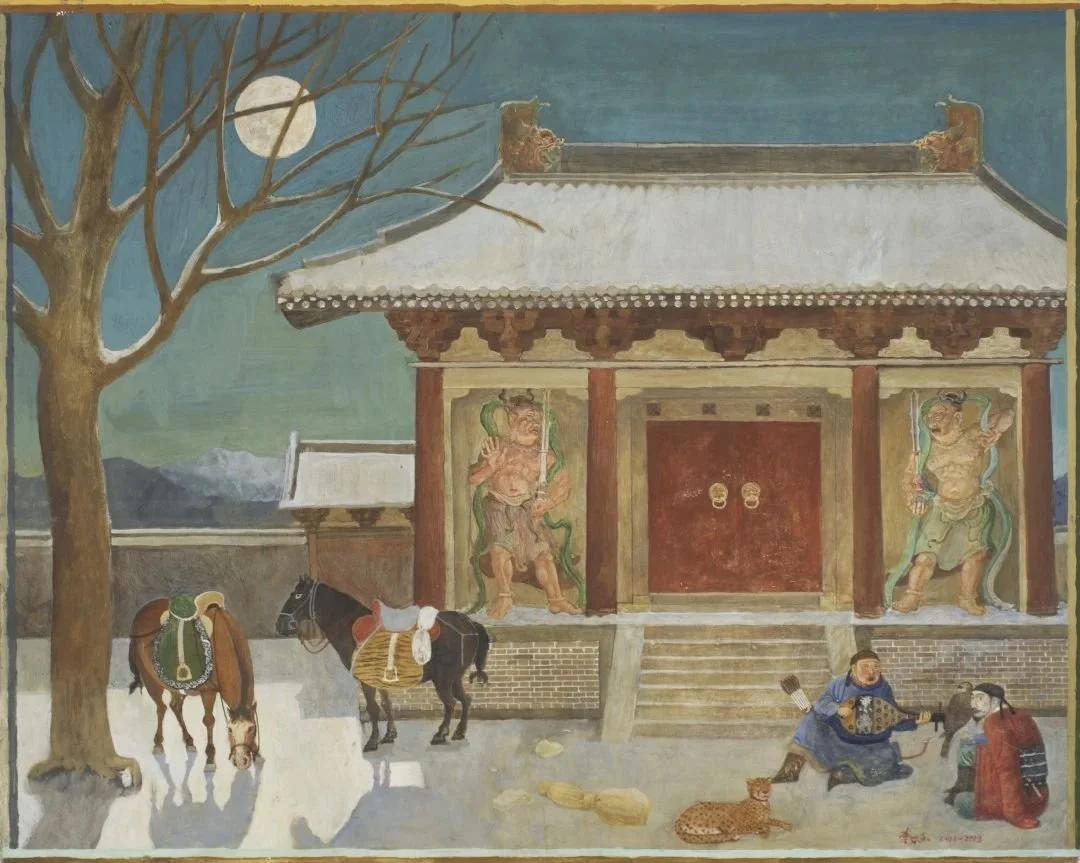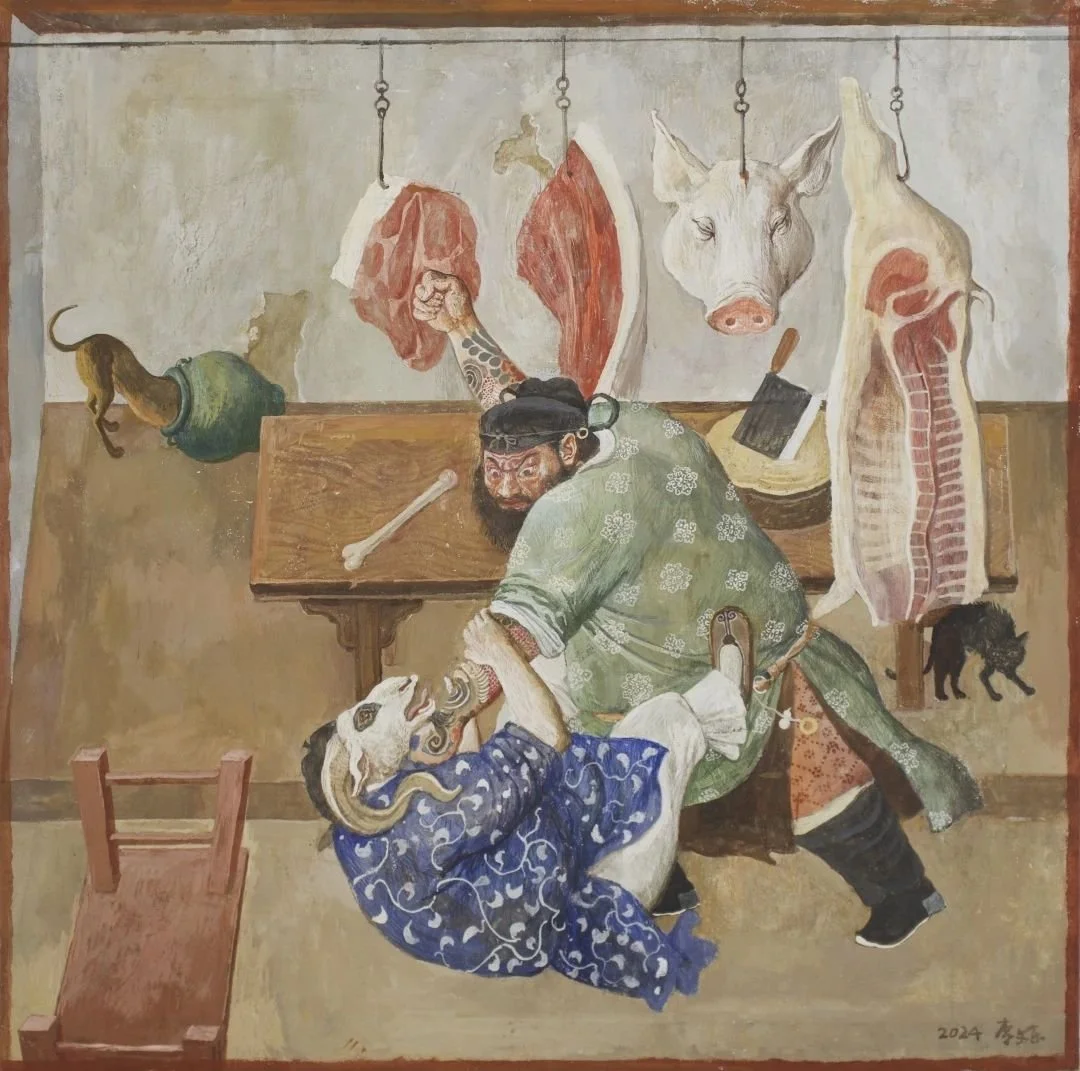狮子搏象图 | 木板坦培拉 |29.5 x 40 cm 2024
About Artist
Born in July 1973 in Shenyang, Liaoning Province, Li Wendong graduated from the Department of Oil Painting at the China Academy of Art in 1997 with a bachelor's degree. He obtained a master's degree from the Department of Oil Painting at the Central Academy of Fine Arts in 2002. He currently teaches in the Mural Department of the School of Public Art at the China Academy of Art. Li Wendong's artistic creation is rooted in and reflects on the relationship between traditional imagery and the mirror of the real world. He juxtaposes numerous ancient scenes to construct a potential folded space concerning nomadism, struggle, and dreams, thus unfolding the narrative and imagination within his paintings.
Artitst : Li Wendong
THE RETURN TO TARTARY
When we first met Li Wendong in the studio, he started discussing the recent online “debate” about his new painting. The discussion ranged from the felt hats worn by the figures to the style of their braids, and from the clothing styles in the painting to the specific historical time periods they corresponded to. Some of these comments he hadn’t noticed before and they became part of his creative thought process; however, some “flaws” seemed to be intentional on his part. In the early stages of his creation, he didn’t set a specific temporal or spatial context, and “precise reference” was not the focus of this new series (in contrast to his previous “Freudian” studies, which emphasized accurate human forms). It seems he was enjoying a series of associations sparked by this “displacement.”
白夜图 | 木板坦培拉 | 80 x 100 cm 2022
This inspiration derived from “displacement” was likely influenced by illustrations in The Exploitation of Nature. Li Wendong realized that ancient paintings were not as old as he had imagined; rather, the illustrations of tools within them exuded a rich modern industrial atmosphere. In particular, the depictions of figures operating tools gave him a sense of being present, an experience that does not often appear in what we consider classics. This feeling narrowed the distance between him and the past, creating a kind of temporal displacement. Consequently, he began to paint the ancient people he imagined, envisioning how they lived. In his paintings, these ancient figures ride horses, hunt, and rest, following a predetermined way of life. Li Wendong places individual scenes together, as if creating a folded space, with these horse riders traversing the entire storyline, yet no one knows where they came from or where they are going.
夜行记 | 木板坦培拉 | 80 x 100 cm 2024
The “fantasy land” inhabited by these nomadic figures unexpectedly evokes the vague and frequently mentioned “Tartary” found on European maps during the Age of Exploration. Historically, “Tartary” referred to the vast regions once ruled by nomadic peoples, stretching from Siberia to Northeast China. Its geographical boundaries were unclear, interspersed with fantasies, fictional names, and erased texts, enduring to this day. As the claimants of that land have long shifted from East Asia to Central Asia and Eastern Europe, questions such as “Who are the Tartars?” and “Where is Tartary?” today yield answers that differ greatly from those of centuries past. This is not surprising, as its initial appearance was to project an elusive regional imagination onto a fluid geographical space, like ripples on a beach, absorbed as they emerge. For Li Wendong, the echo of “Tartary” in his paintings differs from traditional historical subject matter, as he does not aim to “reproduce” this land but to “create” another non-existent space. In the intertwining with “Tartary,” he points towards a specific spatial state through personal experience: if fantasy is a deviation from well-known reality, then this narrative space is essentially a fluid pseudo-reality—an array of associations triggered by displacement.
打拳图 | 木板坦培拉 | 80 x 80 cm 2024
Thus, the return to “Tartary” is no longer merely a physical displacement but presents “displacement” in the painting as a “writerly text” inviting readers to participate in constructing the narrative. At this point, the subject of “return” includes not only the author but also distant observers. It seems we have long been invited by Li Wendong to partake in this fictional nomadic life: dwelling according to the movement of water and grass, hunting tigers and deer with hounds and eagles, witnessing people maneuvering with their hounds and prey, with agile triangular formations escalating the atmosphere of danger. Yet, compared to these blood-pumping daytime action scenes, the brief respite of night seems to serve as a summoning ritual for entering this ancient land. Under the illumination of moonlight and fire, the tense relationships between the figures in the painting temporarily ease, with hounds lying on the ground and eagles perched on branches, while the daytime protagonists, the hunters, have disappeared from the center of the scene, perhaps reclining in a corner playing instruments, as if they already sensed the arrival of outsiders. Then, just like in the Ming Dynasty painting Night Sailing, people of different identities converse leisurely at night, and varied accounts circulate slowly through time, collecting into volumes. Each retelling extends into a new branch of story, pointing to that unknown, danger and opportunity filled “Tartary.”
At this point, I think returning to “Tartary” may merely be a mysterious summoning ritual, the precise answer of which has long blurred. However, the absence of answers is itself a kind of answer. We stroll with the ancient figures in Li Wendong's paintings across the boundless land, exploring many unknown realms, much like temptation—a blend of danger and pleasure.
Qian Ba
Convection gallery in Hangzhou. China
